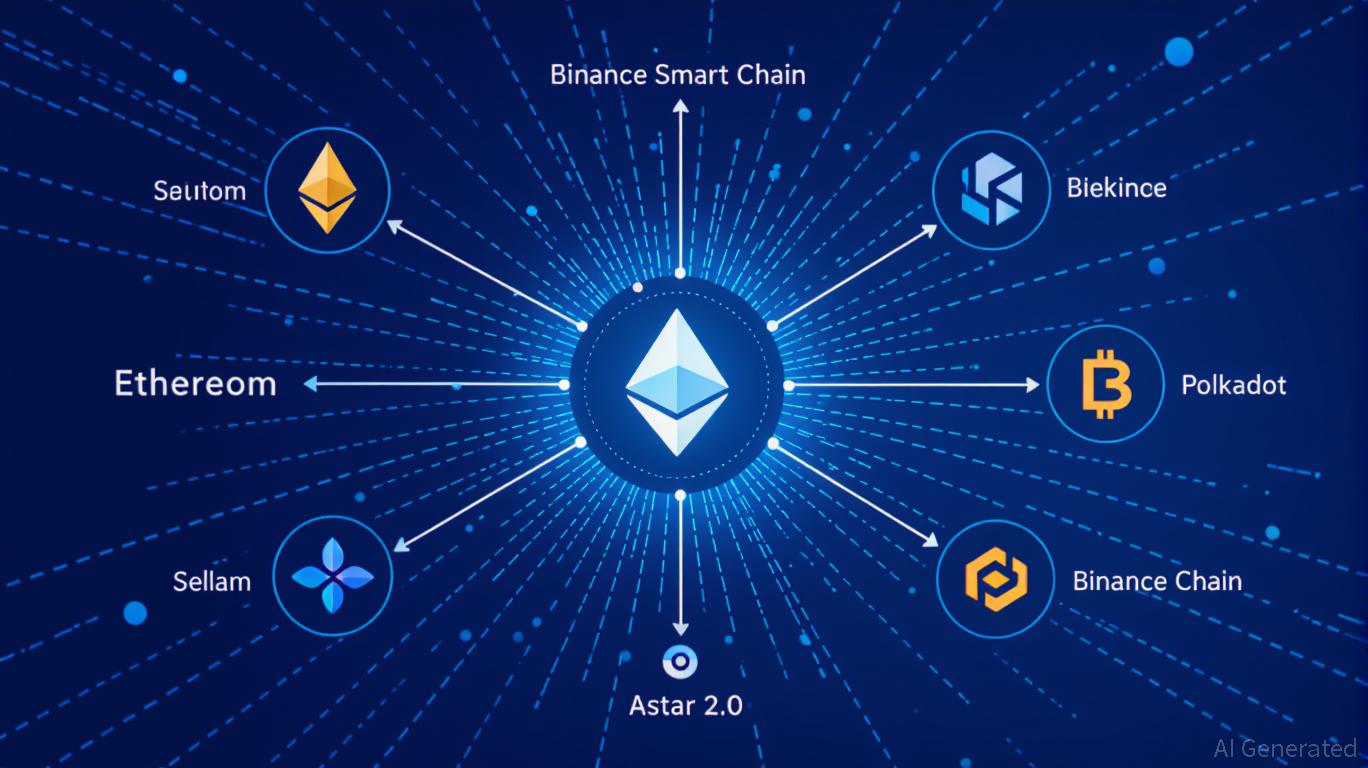Bitcoin News Update: Bitcoin's Decline Reflects the Macroeconomic Influence of Conventional Financial Systems
- Bitcoin fell below $100,000, intensifying bearish sentiment amid macroeconomic uncertainty and trade tensions. - Key support at $88,000 and resistance at $113,000 could determine further declines or recovery, per analysts. - U.S.-China trade conflicts and Fed policy shifts have amplified Bitcoin's sensitivity to global market trends. - Institutional outflows and dollar strength weigh on prices, though a potential "Santa Rally" remains speculative. - Market stability hinges on holding above $100,000 as ma
On Monday, Bitcoin fell beneath the $100,000 mark, deepening negative sentiment among investors as experts caution that further losses could occur if crucial support levels are breached. This decline comes after a turbulent October and November, which were characterized by global economic instability, ongoing trade disputes, and changing expectations regarding Federal Reserve policy. These factors have all contributed to the cryptocurrency’s recent price volatility, according to
The $88,000 threshold—representing Bitcoin’s realized price, or the average entry point for active holders—has historically provided a significant support during past downturns. Experts believe this level could again act as a strong buffer if the current slide continues, though a sustained move above $113,000 might negate the bearish scenario and spark a recovery, as noted in

Broad economic developments have been a major factor in Bitcoin’s recent struggles. Heightened trade friction between the U.S. and China—including the U.S. imposing 100% tariffs on Chinese imports and restricting software exports—has reduced risk appetite across markets. At the same time, the Federal Reserve’s indication that rate reductions may be delayed has strengthened the U.S. dollar and increased demand for interest-bearing assets, putting additional pressure on
Even with the current weakness, some market observers remain cautiously hopeful for a possible “Santa Rally” in December. The expected conclusion of quantitative tightening and the chance of another rate cut could boost liquidity and potentially revive bullish sentiment in the last weeks of 2025, according to Coinpedia. However, this optimistic scenario depends on Bitcoin staying above $113,000, a key resistance level closely watched by traders. Should Bitcoin fall below $100,000, deeper losses could follow, with $88,000 seen as the next significant psychological support, Coinpedia cautioned.
The growing integration of cryptocurrencies with traditional financial systems has made Bitcoin more responsive to global economic shifts. Unlike earlier cycles, when Bitcoin often moved independently of broader markets, institutional flows, ETF activity, and overall macro sentiment now have a major influence on its direction, as reported by Crypto.News. This increased connection has contributed to Bitcoin’s weakest quarterly performance since 2022, with prices down nearly 6% so far in the fourth quarter, according to Crypto.News.
Market participants are encouraged to monitor the $113,000 resistance and $100,000 support levels carefully. A decisive move above $113,000 could indicate a reversal of the current downtrend, while a prolonged drop below $100,000 might pave the way for further declines toward $88,000. The next several weeks will be crucial in determining whether Bitcoin can find stability or if it will face continued downward pressure amid ongoing economic uncertainty.
Disclaimer: The content of this article solely reflects the author's opinion and does not represent the platform in any capacity. This article is not intended to serve as a reference for making investment decisions.
You may also like
Bitcoin News Update: CFTC's Broader Role in Crypto Regulation Ignites Discussion on Clearer Rules
- U.S. lawmakers propose expanding CFTC's crypto oversight via a bill reclassifying spot trading, diverging from SEC's enforcement approach. - Harvard University invests $443M in BlackRock's IBIT ETF, reflecting institutional confidence in crypto as a legitimate asset class. - DeFi projects like Mutuum Finance raise $18.7M in presales, leveraging regulatory momentum and transparent on-chain credit systems. - RockToken's infrastructure-backed crypto contracts attract long-term investors with structured yiel

DASH Aster DEX's Latest On-Chain Growth and What It Means for DeFi Liquidity
- DASH Aster DEX leads 2025 DeFi shift with hybrid AMM-CEX model and multi-chain support (BNB, Ethereum , Solana), boosting TVL to $1.399B and Q3 daily trading volumes of $27.7B. - Platform's 1,650% ASTER token price surge post-TGE attracted 330,000 new wallets, with 94% of BSC-USD volume ($2B/day) driving institutional adoption via Binance/YZi partnerships. - ASTER token mechanics enable 80% margin trading, 5-7% staking rewards, and governance rights, while annual 5-7% fee burns create scarcity and align

Astar 2.0: Leading a New Generation of DeFi and Cross-Chain Advancements
- Astar 2.0 introduces a zkEVM mainnet and cross-chain interoperability, slashing gas fees and enabling 150,000 TPS with 2025 scalability goals. - Strategic partnerships with Mazda, Japan Airlines, and Sony demonstrate blockchain's real-world applications in logistics, loyalty programs, and digital asset tokenization. - Q3 2025 data shows $2.38M DeFi TVL growth and 20% active wallet increase, alongside a $3.16M institutional ASTR token acquisition. - The platform aims to solidify its role as a foundational

Aster DEX Introduces New On-Ramp: Transforming Retail Participation in DeFi
- Aster DEX integrates institutional-grade custody and privacy tech (zero-knowledge proofs) to bridge retail-institutional DeFi gaps via BNB Chain partnerships. - TVL surged to $2.18B by late 2025 through yield-bearing stablecoins and hidden orders, attracting both retail and institutional liquidity. - Despite compliance gaps and wash trading concerns, Aster's Binance alignment and Coinbase listing signals growing institutional validation.
